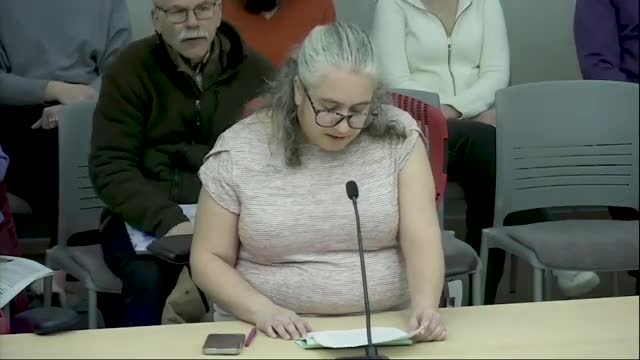Arlington School Committee concludes budget hearing with support for superintendent's proposal
March 16, 2025 | Arlington Public Schools, School Boards, Massachusetts
This article was created by AI summarizing key points discussed. AI makes mistakes, so for full details and context, please refer to the video of the full meeting. Please report any errors so we can fix them. Report an error »

Under the bright lights of the Arlington School Committee meeting, community members gathered both in person and virtually, eager to discuss the future of their schools. The atmosphere was charged with anticipation as the committee prepared to address the pressing issue of the proposed budget for the upcoming year.
As the meeting unfolded, a strong call for support emerged from the audience. One speaker commended the district for its careful management of limited resources and urged the committee to pass the superintendent's proposed budget, emphasizing the importance of promoting it to the town. This sentiment resonated with many present, highlighting a collective desire for a robust educational framework despite financial constraints.
The budget hearing concluded swiftly, with a motion to close the session receiving unanimous approval. This marked a significant step in the district's financial planning, as the committee prepares to allocate resources effectively for the benefit of students and staff alike.
However, the meeting was not solely focused on budgetary matters. Public comments revealed a growing concern regarding the math curriculum. A speaker, identifying themselves as a community member, expressed frustration over the lack of action following the committee's acknowledgment of the curriculum's limitations. They questioned the absence of community engagement initiatives, such as forums or surveys, to gather input on this critical issue. This plea underscored a broader desire for transparency and collaboration between the school committee and the community it serves.
As the meeting progressed, it became clear that while financial planning is crucial, the voices of parents and community members are equally vital in shaping the educational landscape. The discussions held in this meeting reflect a community committed to ensuring that every child receives a quality education, even amidst challenges. The Arlington School Committee's next steps will be closely watched as they navigate these complex issues, balancing budgetary constraints with the educational needs of their students.
As the meeting unfolded, a strong call for support emerged from the audience. One speaker commended the district for its careful management of limited resources and urged the committee to pass the superintendent's proposed budget, emphasizing the importance of promoting it to the town. This sentiment resonated with many present, highlighting a collective desire for a robust educational framework despite financial constraints.
The budget hearing concluded swiftly, with a motion to close the session receiving unanimous approval. This marked a significant step in the district's financial planning, as the committee prepares to allocate resources effectively for the benefit of students and staff alike.
However, the meeting was not solely focused on budgetary matters. Public comments revealed a growing concern regarding the math curriculum. A speaker, identifying themselves as a community member, expressed frustration over the lack of action following the committee's acknowledgment of the curriculum's limitations. They questioned the absence of community engagement initiatives, such as forums or surveys, to gather input on this critical issue. This plea underscored a broader desire for transparency and collaboration between the school committee and the community it serves.
As the meeting progressed, it became clear that while financial planning is crucial, the voices of parents and community members are equally vital in shaping the educational landscape. The discussions held in this meeting reflect a community committed to ensuring that every child receives a quality education, even amidst challenges. The Arlington School Committee's next steps will be closely watched as they navigate these complex issues, balancing budgetary constraints with the educational needs of their students.
View full meeting
This article is based on a recent meeting—watch the full video and explore the complete transcript for deeper insights into the discussion.
View full meeting
